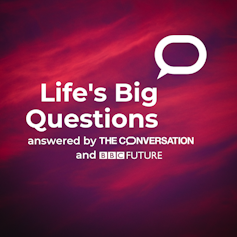
GUEST POST from Janet Sernack
A recent McKinsey Leading Off – Essentials for leaders and those they lead email newsletter, referred to an article “The organization of the future: Enabled by gen AI, driven by people” which stated that digitization, automation, and AI will reshape whole industries and every enterprise. The article elaborated further by saying that, in terms of magnitude, the challenge is akin to coping with the large-scale shift from agricultural work to manufacturing that occurred in the early 20th century in North America and Europe, and more recently in China. This shift was powered by the defining trait of our species, our human creativity, which is at the heart of all creative problem-solving endeavors, where innovation is the engine of growth, no matter, what the context.
Moving into Unchartered Job and Skills Territory
We don’t yet know what exact technological, or soft skills, new occupations, or jobs will be required in this fast-moving transformation, or how we might further advance generative AI, digitization, and automation.
We also don’t know how AI will impact the need for humans to tap even more into the defining trait of our species, our human creativity. To enable us to become more imaginative, curious, and creative in the way we solve some of the world’s greatest challenges and most complex and pressing problems, and transform them into innovative solutions.
We can be proactive by asking these two generative questions:
- What if the true potential of AI lies in embracing its ability to augment human creativity and aid innovation, especially in enhancing creative problem solving, at all levels of civil society, instead of avoiding it? (Ideascale)
- How might we develop AI as a creative thinking partner to effect profound change, and create innovative solutions that help us build a more equitable and sustainable planet for all humanity? (Hal Gregersen)
Because our human creativity is at the heart of creative problem-solving, and innovation is the engine of growth, competitiveness, and profound and positive change.
Developing a Co-Creative Thinking Partnership
In a recent article in the Harvard Business Review “AI Can Help You Ask Better Questions – and Solve Bigger Problems” by Hal Gregersen and Nicola Morini Bianzino, they state:
“Artificial intelligence may be superhuman in some ways, but it also has considerable weaknesses. For starters, the technology is fundamentally backward-looking, trained on yesterday’s data – and the future might not look anything like the past. What’s more, inaccurate or otherwise flawed training data (for instance, data skewed by inherent biases) produces poor outcomes.”
The authors say that dealing with this issue requires people to manage this limitation if they are going to treat AI as a creative-thinking partner in solving complex problems, that enable people to live healthy and happy lives and to co-create an equitable and sustainable planet.
We can achieve this by focusing on specific areas where the human brain and machines might possibly complement one another to co-create the systemic changes the world badly needs through creative problem-solving.
This perspective is further complimented by a recent Boston Consulting Group article “How people can create-and destroy value- with generative AI” where they found that the adoption of generative AI is, in fact, a double-edged sword.
In an experiment, participants using GPT-4 for creative product innovation outperformed the control group (those who completed the task without using GPT-4) by 40%. But for business problem solving, using GPT-4 resulted in performance that was 23% lower than that of the control group.
“Perhaps somewhat counterintuitively, current GenAI models tend to do better on the first type of task; it is easier for LLMs to come up with creative, novel, or useful ideas based on the vast amounts of data on which they have been trained. Where there’s more room for error is when LLMs are asked to weigh nuanced qualitative and quantitative data to answer a complex question. Given this shortcoming, we as researchers knew that GPT-4 was likely to mislead participants if they relied completely on the tool, and not also on their own judgment, to arrive at the solution to the business problem-solving task (this task had a “right” answer)”.
- Taking the path of least resistance
In McKinsey’s Top Ten Reports This Quarter blog, seven out of the ten articles relate specifically to generative AI: technology trends, state of AI, future of work, future of AI, the new AI playbook, questions to ask about AI and healthcare and AI.
As it is the most dominant topic across the board globally, if we are not both vigilant and intentional, a myopic focus on this one significant technology will take us all down the path of least resistance – where our energy will move to where it is easiest to go. Rather than being like a river, which takes the path of least resistance to its surrounding terrain, and not by taking a strategic and systemic perspective, we will always go, and end up, where we have always gone.
- Living our lives forwards
According to the Boston Consulting Group article:
“The primary locus of human-driven value creation lies not in enhancing generative AI where it is already great, but in focusing on tasks beyond the frontier of the technology’s core competencies.”
This means that a whole lot of other variables need to be at play, and a newly emerging set of human skills, especially in creative problem solving, need to be developed to maximize the most value from generative AI, to generate the most imaginative, novel and value adding landing strips of the future.
Creative Problem Solving
In my previous blog posts “Imagination versus Knowledge” and “Why Successful Innovators Are Curious Like Cats” we shared that we are in the midst of a “Sputnik Moment” where we have the opportunity to advance our human creativity.
This human creativity is inside all of us, it involves the process of bringing something new into being, that is original, surprising useful, or desirable, in ways that add value to the quality of people’s lives, in ways they appreciate and cherish.
- Taking a both/and approach
Our human creativity will be paralysed, if we focus our attention and intention only on the technology, and on the financial gains or potential profits we will get from it, and if we exclude the possibilities of a co-creative thinking partnership with the technology.
To deeply engage people in true creative problem solving – and involving them in impacting positively on our crucial relationships and connectedness, with one another and with the natural world, and the planet.
- A marriage between creatives, technologists, and humanities
In a recent Fast Company video presentation, “Innovating Imagination: How Airbnb Is Using AI to Foster Creativity” Brian Chesky CEO of Airbnb, states that we need to consider and focus our attention and intention on discovering what is good for people.
To develop a “marriage between creatives, technologists, and the humanities” that brings the human out and doesn’t let technology overtake our human element.
Developing Creative Problem-Solving Skills
At ImagineNation, we teach, mentor, and coach clients in creative problem-solving, through developing their Generative Discovery skills.
This involves developing an open and active mind and heart, by becoming flexible, adaptive, and playful in the ways we engage and focus our human creativity in the four stages of creative problem-solving.
Including sensing, perceiving, and enabling people to deeply listen, inquire, question, and debate from the edges of temporarily hidden or emerging fields of the future.
To know how to emerge, diverge, and converge creative insights, collective breakthroughs, an ideation process, and cognitive and emotional agility shifts to:
- Deepen our attending, observing, and discerning capabilities to consciously connect with, explore, and discover possibilities that create tension and cognitive dissonance to disrupt and challenge the status quo, and other conventional thinking and feeling processes.
- Create cracks, openings, and creative thresholds by asking generative questions to push the boundaries, and challenge assumptions and mental and emotional models to pull people towards evoking, provoking, and generating boldly creative ideas.
- Unleash possibilities, and opportunities for creative problem solving to contribute towards generating innovative solutions to complex problems, and pressing challenges, that may not have been previously imagined.
Experimenting with the generative discovery skill set enables us to juggle multiple theories, models, and strategies to create and plan in an emergent, and non-linear way through creative problem-solving.
As stated by Hal Gregersen:
“Partnering with the technology in this way can help people ask smarter questions, making them better problem solvers and breakthrough innovators.”
Succeeding in the Age of AI
We know that Generative AI will change much of what we do and how we do it, in ways that we cannot yet anticipate.
Success in the age of AI will largely depend on our ability to learn and change faster than we ever have before, in ways that preserve our well-being, connectedness, imagination, curiosity, human creativity, and our collective humanity through partnering with generative AI in the creative problem-solving process.
Find Out More About Our Work at ImagineNation™
Find out about our collective, learning products and tools, including The Coach for Innovators, Leaders, and Teams Certified Program, presented by Janet Sernack, is a collaborative, intimate, and deeply personalized innovation coaching and learning program, supported by a global group of peers over 9-weeks, which can be customised as a bespoke corporate learning program.
It is a blended and transformational change and learning program that will give you a deep understanding of the language, principles, and applications of an ecosystem focus, human-centric approach, and emergent structure (Theory U) to innovation, and upskill people and teams and develop their future fitness, within your unique innovation context. Find out more about our products and tools.
Image Credit: Pixabay
 Sign up here to join 17,000+ leaders getting Human-Centered Change & Innovation Weekly delivered to their inbox every week.
Sign up here to join 17,000+ leaders getting Human-Centered Change & Innovation Weekly delivered to their inbox every week.

![]() Sign up here to join 17,000+ leaders getting Human-Centered Change & Innovation Weekly delivered to their inbox every week.
Sign up here to join 17,000+ leaders getting Human-Centered Change & Innovation Weekly delivered to their inbox every week.
 Drum roll please…
Drum roll please…








